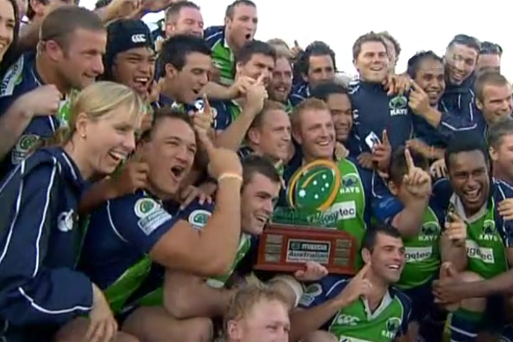The last new tournament in 2014 will be a third-tier National Rugby Competition, involving eight or ten teams. It will slot in between second-tier Super Rugby and fourth-tier club rugby.
People having been waiting for this for seven years, since the demise of the Australian Rugby Competition [ARC] in 2007. Not everybody thinks this competition is necessary but most do, including nearly all of the players.
Official details of the National Rugby Competition [NRC] available to date can be seen in the Australian Rugby Union [ARU] media release and the Part I and Part II question and answer sessions with Ben Whittaker of the ARU.
Add in hints from a few quotes by ARU Chief Executive, Bill Pulver, and read the tea leaves, and you will probably come up with the following assessment—the NRC will be the rebirth of the ARC.
What will be different this time?
The funding of it.
In 2007 the ARU paid for everything, including the production costs of the ABC to broadcast two games per week. They lost about $5 million in one year.
This time the teams will pay for match costs such as ground hire and local marketing, plus team costs such as payments to players, coaches and other team staff. They will retain any rights they would normally have to gate receipts, merchandising and catering, and be allowed to enlist team sponsors.
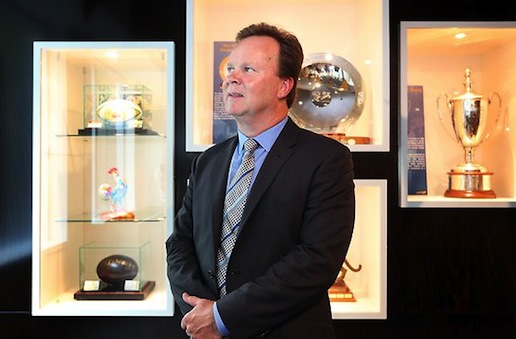
The NRC will not be a big money earner for the teams. They will need financial starch to survive even to a point where they can cover their annual costs. For this break-even event to happen revenue will have to be nudged up over the years by the competition engaging consumers of sport.
The ARU will be responsible for the costs of administering the competition, travel and accommodation. These will be covered by an arrangement with Foxtel and Fox Sports, according to Pulver. The agreement will last for a minimum of two years and could be extended to seven years.
There are a few grey areas about who plays what cost but at first glance it seems like a Baldrick cunning plan because Fox Sports will broadcast only one game per week, plus the semis and final, per season.
Perhaps Foxtel and Fox Sports are being generous because they want a foot in the door to forestall a possible bid from free-to-air television when the ARU renegotiates the broadcast deal for Super Rugby with SANZAR next year.
The question arises: what happens if the broadcasters don’t renew the deal after two years? The ARU are sourcing a naming rights sponsor for the NRC but this revenue will probably be needed anyway to cover incremental “grey area” headquarters costs that can’t be passed on to the teams.
The NRC will survive only as long as ARU costs are defrayed, but this is not fazing Pulver who has a vision, and said:
I think this competition will be in place forever.
How will club rugby be affected?
Because the NRC will start in August and end in October, club rugby has to end earlier than is normal. Agreement on this matter has been negotiated with the organisers of Premier Rugby in Brisbane and the Shute Shield in Sydney.
Expect Super Rugby pre-season training to start later than it does now to give non-Wallaby Super Rugby players a break after the NRC.
The club Grade season will be shorter than is usual, but if they start earlier they can gain a few weeks, provided they can schedule early games at the right locations to take account of the pesky cricket season.
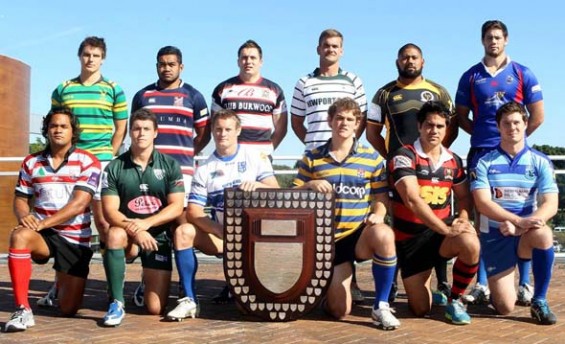
Colts and Grade rugby should still be able to produce the players for the next level and, hey, if the Super Rugby player ring-ins won’t be available late in the season to skew the results of club rugby as they usually do, all the better for the clubs who don’t have too many professionals.
When the NRC starts, club rugby could schedule new short competitions for players not involved in it.
In Sydney, for example, they could have a short two division comp for clubs, like the old Trevor Allan Cup, and include a team each from the Illawarra District Rugby Union, the Newcastle and Hunter Rugby Union, and maybe the NSW Suburban Rugby Union.
Clubs that run short of good players because of the NRC could play in the second division.
They could keep the Colts competition going or at least have a short Colts Under 19 comp to assess players for the new Australian Under 20 competition early the following year.
It could be the similar in other places, or, if they are not affected much, they could carry on as usual.
Where will the NRC teams come from?
In theory they could be formed anywhere in the country by any joint venture of clubs, any individual club, or even any individual.
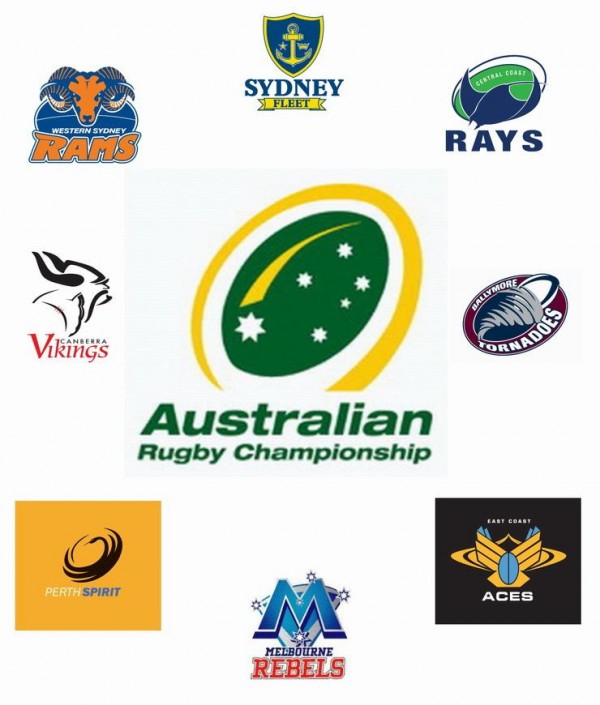
But when the NRC Commission, chaired by the experienced sports administrator John Boultbee AM, processes the bids, it will ensure that there will be a team each from Perth, Melbourne and Canberra, three from Sydney (including one in the west) and two from Queensland—the same as in 2007.
That’s in the eight-team model. If there are to be ten teams there will be an extra one from Sydney and another one from somewhere else.
The NRC Commission, which comprises representatives from the ARU, RUPA (the players union), Super Rugby, Foxtel and Fox Sports, may also act as a deal maker to get the geographical mix of teams they want.
Who will get what players?
That’s a key question.
There are 35 players in each Australian extended Super Rugby squad. When you add in a few new players introduced during the season, and deduct foreigners, injured players, those allowed to scoot overseas, and the 30 or more grabbed by the Wallabies for training, you would end up with about 120 healthy, available professional Aussies.
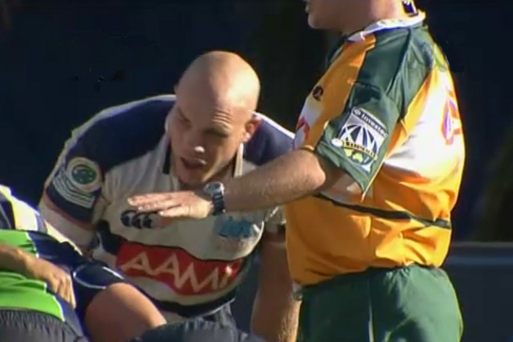
All of them will be required to play in the NRC, and roughly the same number of non-professionals will join them.
Will the professionals be subject to a draft, or be sent where the Commission decides; or will they be permitted to choose any team? Will any player be allowed to play for their club team if they stand alone, or the NRC team which their club is a joint venture partner of?
Watch this space on this vital matter.
As Laurie Fisher said regarding the Brumbies players: “Our preference would be to keep our players together and then add to them from the local competition”.
You like players together to work with them, but we’re not going to squabble, we’ll put our view forward and accept any decision. This competition has to work and I think it will.
Player remuneration
The financial failure of the ARC in 2007 was due partly to the size of the payroll because some professional players were paid excessive amounts additional to their Super 14 contract salaries.
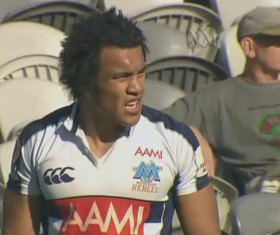
But this won’t happen this time. The Rugby Union Players Association, which represents the players on the NRC Commission, want the competition to succeed and say they will be reasonable.
It is likely that they will concur with the ARU’s position that fully contracted Super Rugby professionals will not be paid anything extra for participating in the NRC, but that the EPS players and developing players will be looked after.
In the unlikely event that NRC teams start throwing too much money around there will be a modest salary cap for wages payable by the organisations, and a cap for payments to any individual.
What’s happening at the minute?
Applicants had until 13 January 2014 to file an expression of interest, which was an excellent step that was missing from the establishment of the ARC in 2007. The were allowed to file as stand-alone entities and/or in joint venture with others.
The official announcement was made five weeks before this deadline; one wonders why it was not more like five months before.
Now there will be a tendering process in which the applicants have to satisfy certain criteria to the NRC Commission. An announcement of the successful tenders is expected to be made in early March.
Teams from Perth, Melbourne and Canberra will be linked directly with their Super Rugby organisation.
According to Pulver:
It has been done on an incredibly cost-effective basis. The key to the financial viability of the NRC is leveraging Super Rugby infrastructure.
We have existing coaches and players on contract. There will be some incremental costs involved, but this is a financial model that will work.
One wonders what the contribution of the Reds and Waratahs will be to the NRC teams in the rugby homeland states, and how their assistance will be rationed to them.
There is something else happening at the ARU:
We are in the process of negotiating a live streaming platform with YouTube. This should be in operation shortly for matches and events throughout the ARU departments.
Sounds like there is a chance that some NRC games will be available on YouTube. Even if the only commentary on it is from the officials, as was available on back-channel recordings in 2007, it would be something. Well done ARU if it happens.
Click on arrow for Page 2
We are a fan run website, we appreciate your support.
💬 Have you got a news article suggestion? Submit a story and have your say
👀 Follow us on Facebook, Instagram and X.com
🎵 Listen to our Podcasts on Spotify and iTunes
🎥 Watch our Podcasts on YouTube

